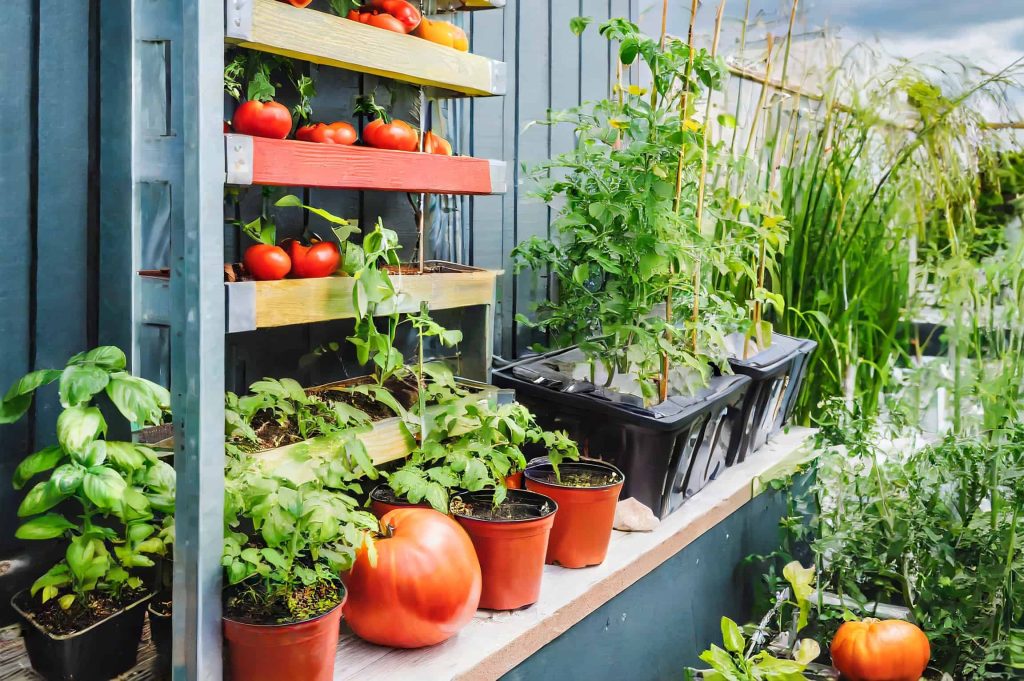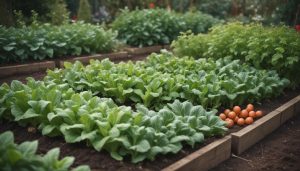Gardening Techniques for Urban Homes
Daniel Fisher August 18, 2025
Urban gardening has evolved significantly, moving beyond traditional backyard plots to innovative solutions that maximize limited spaces. In 2025, city dwellers are embracing sustainable and efficient gardening techniques that not only beautify their surroundings but also contribute to environmental well-being. This article explores the top urban gardening trends of 2025, offering practical tips and insights for creating thriving green spaces in small urban environments.

1. Vertical Gardening: Maximizing Limited Space
As urban areas become more congested, utilizing vertical space has become essential. Vertical gardening involves growing plants upwards using structures like trellises, wall planters, and green walls. This method not only saves ground space but also enhances air quality and provides natural insulation.
Benefits of Vertical Gardening
- Space Efficiency: Ideal for balconies, rooftops, and small backyards.
- Improved Air Quality: Plants absorb pollutants and release oxygen.
- Aesthetic Appeal: Creates lush, green walls that add beauty to urban landscapes.
Getting Started with Vertical Gardening
- Choose the Right Plants: Opt for climbing plants like ivy, jasmine, or vegetables such as tomatoes and cucumbers.
- Select Appropriate Structures: Use trellises, wall-mounted planters, or modular green wall systems.
- Ensure Proper Maintenance: Regularly water and prune plants to encourage healthy growth.
2. Native Plants: Supporting Local Ecosystems
Incorporating native plants into urban gardens supports local ecosystems and reduces the need for chemical fertilizers and pesticides. Native plants are species that naturally occur in a specific region and have adapted to local climate conditions.
Advantages of Native Plants
- Low Maintenance: Adapted to local soil and climate, requiring less water and care.
- Supports Local Wildlife: Provides habitat and food for native pollinators and birds.
- Enhances Biodiversity: Contributes to the ecological balance of urban areas.
Tips for Incorporation
- Research Local Species: Consult local horticultural societies or native plant organizations.
- Design with Purpose: Group plants with similar water and sunlight needs.
- Avoid Invasive Species: Ensure the plants are non-invasive to protect local ecosystems.
3. Sustainable Water Practices: Conserving a Vital Resource
Water conservation is a critical concern in urban gardening. Implementing sustainable watering practices helps conserve this vital resource and supports plant health.
Water Conservation Techniques
- Rainwater Harvesting: Install rain barrels to collect and store rainwater for garden use.
- Drip Irrigation Systems: Deliver water directly to plant roots, minimizing waste.
- Mulching: Apply organic mulch around plants to retain soil moisture and reduce evaporation.
Additional Strategies
- Water-Efficient Plants: Choose drought-tolerant species that require less water.
- Proper Timing: Water plants during early morning or late evening to reduce evaporation.
4. Indoor Gardening Innovations: Growing Indoors Year-Round
Indoor gardening allows urban residents to grow plants year-round, regardless of outdoor space limitations. Advances in technology have made indoor gardening more accessible and efficient.
Popular Indoor Gardening Methods
- Hydroponics: Growing plants in a water-based, nutrient-rich solution without soil.
- Aquaponics: Combining fish farming with hydroponics, creating a symbiotic environment.
- Smart Gardens: Automated systems that monitor and adjust light, water, and nutrients.
Getting Started Indoors
- Select Suitable Plants: Leafy greens, herbs, and small vegetables thrive indoors.
- Invest in Technology: Use smart garden kits that include sensors and automated systems.
- Ensure Adequate Lighting: Utilize grow lights to provide necessary light for photosynthesis.
5. Community Gardening Initiatives: Building Stronger Communities
Community gardens are shared spaces where urban residents can grow food collectively. These initiatives foster community engagement, provide access to fresh produce, and promote environmental stewardship.
Benefits of Community Gardens
- Social Interaction: Builds relationships among neighbors and community members.
- Access to Fresh Produce: Provides affordable, locally grown food.
- Educational Opportunities: Offers workshops and learning experiences on gardening and sustainability.
How to Get Involved
- Join Local Programs: Look for community garden programs in your area.
- Volunteer: Offer your time and skills to support garden maintenance and activities.
- Start a Garden: Collaborate with neighbors to establish a new community garden.
6. Smart Gardening Technologies: Enhancing Efficiency
Technology is playing an increasingly important role in urban gardening. Smart gardening tools and systems help optimize plant care and resource use.
Smart Gardening Tools
- Automated Irrigation Systems: Use sensors to determine when and how much to water plants.
- Soil Moisture Sensors: Monitor soil moisture levels to prevent over or under-watering.
- Climate Control Systems: Regulate temperature and humidity for optimal plant growth.
Benefits of Smart Gardening
- Resource Efficiency: Reduces water and energy consumption.
- Convenience: Automates routine gardening tasks, saving time and effort.
- Improved Plant Health: Provides optimal growing conditions for plants.
7. Edible Landscaping: Growing Food Aesthetically
Edible landscaping integrates food-producing plants into ornamental landscapes. This approach allows urban residents to grow their own food without sacrificing aesthetics.
Benefits of Edible Landscaping
- Fresh Produce: Provides easy access to homegrown fruits, vegetables, and herbs.
- Aesthetic Appeal: Combines beauty and functionality in garden design.
- Sustainability: Reduces the carbon footprint associated with transporting food.
Getting Started with Edible Landscaping
- Design Thoughtfully: Incorporate edible plants into existing landscapes without overcrowding.
- Choose Appropriate Plants: Select varieties that complement ornamental plants and thrive in your climate.
- Maintain Regularly: Prune and harvest plants to encourage healthy growth and production.
Conclusion
Urban gardening in 2025 is characterized by sustainability, innovation, and community engagement. By adopting vertical gardening, incorporating native plants, implementing water conservation techniques, exploring indoor gardening options, participating in community gardening initiatives, utilizing smart gardening technologies, and embracing edible landscaping, urban residents can create green spaces that enhance their living environments and contribute to a more sustainable future.
Moreover, urban gardening fosters a stronger connection to nature, improves mental well-being, and encourages mindful consumption of resources. These green practices not only beautify city landscapes but also empower communities to take part in ecological preservation. By integrating these techniques into daily life, individuals can transform small urban spaces into productive, aesthetically pleasing, and environmentally friendly gardens that benefit both people and the planet.
References
- Urban Plant Blog. (2025, May 19). What Are the Hot Gardening Trends of 2025? Urban Plant. Available at: https://www.urbanplant.in (Accessed: 18 August 2025).
- Wild Ones. (2025, June 6). Native Plants for Urban Balconies. Wild Ones. Available at: https://wildones.org (Accessed: 18 August 2025).
- Wired. (2025, July 15). We Tried 5 of the Most Popular Indoor Gardening Systems. Wired. Available at: https://www.wired.com (Accessed: 18 August 2025).







